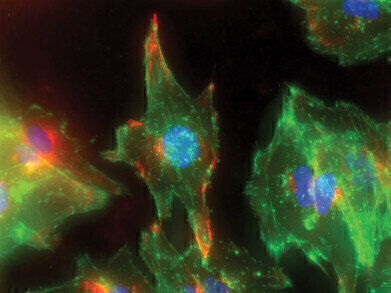Laboratory Products
Lonza’s RAFT™ 3D Cell Culture System Enables Corneal Modeling for Research into Potential Blindness Cure
Nov 22 2016
Lonza’s RAFT™ 3D Cell Culture System has been used to develop corneal models for research into treatment for a painful and potentially blinding corneal disease. During a recent Nature webinar, now available on demand, Julie Daniels, Professor of Regenerative Medicine and Cellular Therapy at University College London, explained how her laboratory has successfully developed multilayer corneal models using RAFT™ 3D Cell Cultures and applied this research to address the current gaps in limbal stem cell deficiency (LSCD) treatment. Her lab aspires to take their research to the next level – that is, into clinical applications – with the ultimate aim of improving patient care.
Limbal epithelial stem cells (LESCs) are responsible for maintenance and repair of the corneal surface. Injury or loss of these cells can lead to LSCD in which the cornea becomes opaque, vascularized and inflamed, potentially leading to blindness. Transplantation of cultured human limbal epithelial cells (hLE) sourced from the patient or from cadaver tissue on human amniotic membrane (HAM) may restore vision but clinical graft manufacture can be costly and un-reliable. Alternative carrier methods are sought that display the correct optical and mechanical properties to be as transparent as possible, that improve treatment reliability and that also have the capability to expand and carry cells to the cornea.
Professor Daniels’ team has developed a reliable and robust tissue equivalent to HAM that uses Lonza’s RAFT™ 3D Cell Culture System. Her team’s research shows promising opportunities to potentially improve treatment success rate for LESC deficiency. Although RAFT™ 3D Cell Culture System offered by Lonza is not suitable for clinical transplantations, it offers a stepping stone to potentially develop a clinical-grade equivalent method that can replace HAM.
“3D cell culture is transforming cell biology and tissue engineering applications,” explains Lubna Hussain, Product Manager at Lonza. “There is a trending shift within research to more biologically relevant models to understand cell behavior and improve outcomes for human diseases. The RAFT™ 3D Culture System creates cell cultures within high-density collagen scaffolds that are robust and transparent, making the system particularly suited to support research into corneal applications.”
An important differentiator of the RAFT™ 3D Cell Culture System from other 3D platforms or 2D culture methods is its usability in developing complex in vitro models. The versatility of the system has been particularly beneficial in applications where a multi-layer co-culture setup is difficult to achieve with alternative methods, such as in corneal modeling.
More information on how the RAFT™ 3D Cell Culture System can be used for corneal models and how to access the webinar can be found here.
Digital Edition
Lab Asia 31.2 April 2024
April 2024
In This Edition Chromatography Articles - Approaches to troubleshooting an SPE method for the analysis of oligonucleotides (pt i) - High-precision liquid flow processes demand full fluidic c...
View all digital editions
Events
Apr 22 2024 Marrakech, Morroco
Making Pharmaceuticals Exhibition & Conference
Apr 23 2024 Coventry, UK
Apr 23 2024 Kintex, South Korea
Apr 23 2024 Seoul, South Korea
Apr 24 2024 Jakarta, Indonesia

.jpg)


.jpg)













